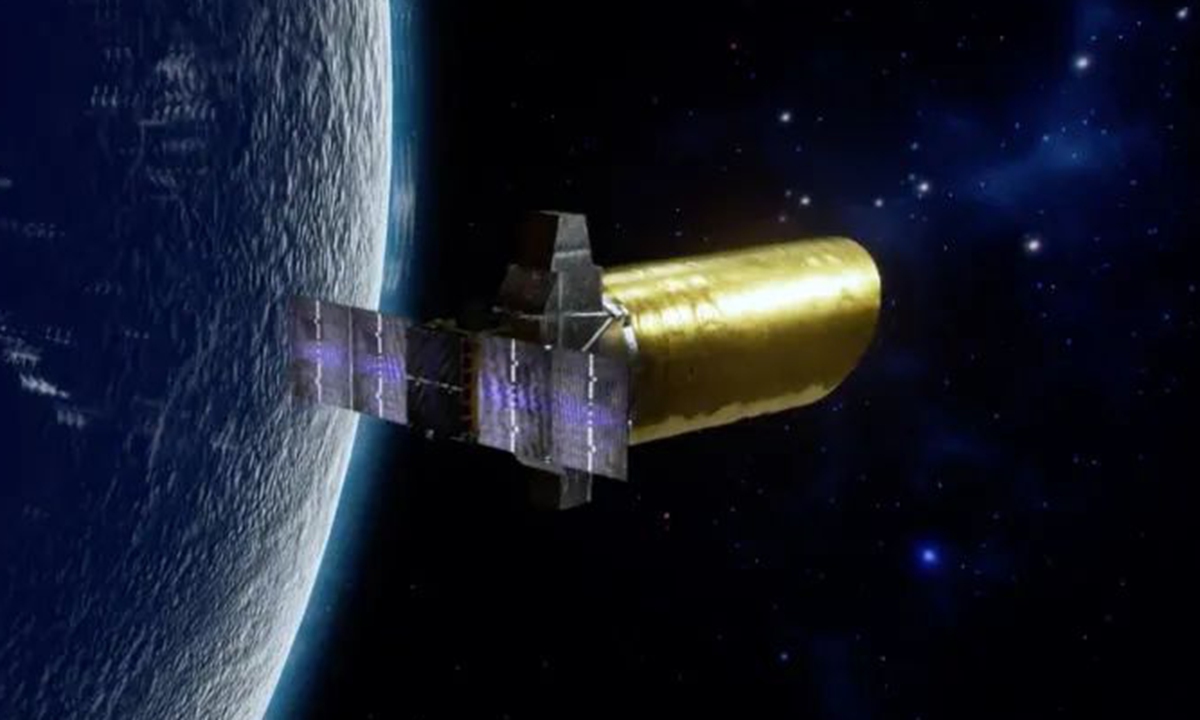
Conceptual photo of China's Xuntian program in search for neighboring Earth-like planets beyond the solar system. Photo:Courtesy of the Purple Mountain Observatory
Chinese astronomers have proposed a space telescope survey program to search for habitable exoplanets some 32 light-years from Earth. This would be the world's first space exploration mission dedicated to finding neighboring Earth-like planets via astrometry beyond the solar system, the Global Times learned from the project leader on Thursday.
"The search for habitable exoplanets is one of the fundamental research frontiers in astronomy, which concerns major scientific questions such as whether the Earth is 'unique' and how planets become the 'cradle of life'," said Ji Jianghui, the project leader and research fellow of the Purple Mountain Observatory, affiliated with the Chinese Academy of Sciences.
More than 5,000 exoplanets have been found and confirmed so far, of which about 50 are believed to be habitable terrestrial planets, but most of them are thousands of light-years away. "Finding habitable Earth-like planet around the nearby solar-type stars would be a major discovery for mankind and will help us study future human visits and even search for new places to live," Ji told the Global Times.
The program, called CHES (Closeby Habitable Exoplanet Survey) plans to carry out long-term observations on roughly 100 solar analogs about 32 light years from Earth, and it is expected to discover for the first time terrestrial planets in habitable zones around those nearby solar-type stars, especially an "Earth 2.0" that is of similar size, orbit and environment to ours, Ji said.
The program is expected to find about 50 terrestrial planets or super-Earths, he added.
The Kepler space telescope, launched in March 2009 by NASA with a similar mission to survey the Milky Way galaxy to discover Earth-like planets orbiting other stars, uses the transit method to detect exoplanets. The mission finds planets by looking for tiny dips in the brightness of a star when a planet crosses in front of it.
However, such a method can only obtain the radius of a planet but cannot directly provide the real planetary mass. It also needs confirmation of other assisting techniques on the ground-based telescopes to determine whether the signals of dimming due to the stellar photometryare caused by the passing of a planet or other stellar activities, thereby greatly reducing the efficiency of detection, Ji noted. As the requirements for Kepler's detection are very high, the chance of discovering a planet is only five per thousand.
China's CHES program will adopt a different approach -known as ultra-high-precision relative astrometry. "Astrometry is a classic method in astronomical observations, but its use for detecting habitable Earth-like planets is a primitive innovation. For us to find 'Earth 2.0,' we need unprecedented precision in measurement, which will reach a level equivalent to being able to distinguish a coin's edge placed on moon from observers on Earth," Ji said.
Compared with Kepler's transit method, the astrometry approach can accurately measure micro-arcsecond level angular separation between one target star and 6-8 reference stars. Based on the measurements of these tiny changes, scientists can detect whether there are terrestrial planets around them.
"The most distinct advantage of the method is that our approach can detect every existing planet around the nearby stars, just like carrying out a comprehensive census on neighboring solar analogs. We can also directly measure the real mass of a planet, a crucial index of determining whether it has similar conditions as those on Earth," Ji told the Global Times.
According to the plan, an optical telescope with an aperture of 1.2 meters will be sent into a halo orbit near the Earth-Sun L2 Lagrangian point and maintain a stable operation of at least five years, during which time it will observe 100 stars.
China's Chang'e-2 moon exploration project, after completing designated missions, once traveled to the mentioned orbit, so China has acquired rather mature techniques of flying satellites into the orbit, said experts.
The mission, in addition to detecting habitable exoplanets, will also contribute to the astronomy frontiers such as dark matter and black holes. The key technology of the study has already been mastered by Chinese scientists, and extensive international collaboration has been carried out, media reports said.




